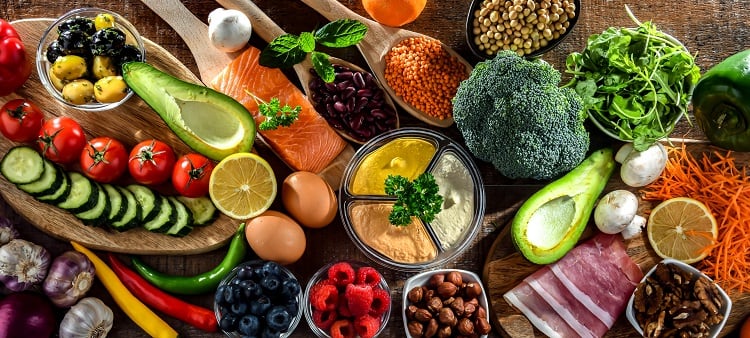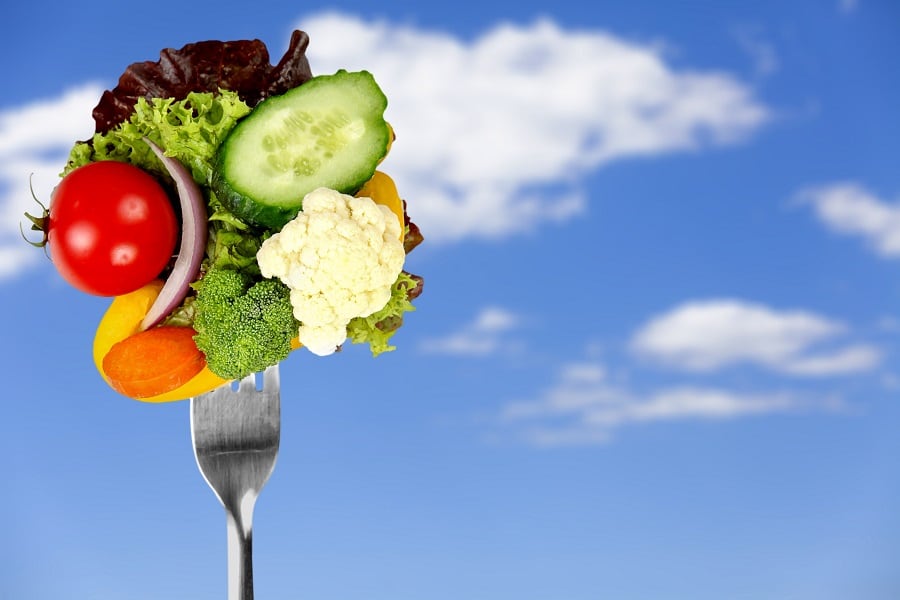While American consumer culture is not COVID-free, health and wellness are shaped by “a desire for quality of life and longevity, resistance to the commercialization of wellness and inflation,” based on the survey.
The study surveyed 2,175 Americans 18 to 77 years old and found many consumers (72%) across generations who are proactive about their health, lowering health risks and disease prevention. This includes food and its impact on mental health as well.
Melissa Abbott, vice president, syndicated studies, Hartman Group, noted mental wellness and physical wellness are no longer distinct, “We’re going to see how important specific foods relate to our mental wellness as holistic wellness—that it’s not distinct from one another.”
Similarly, the USDA’s recent study linked fresh vegetable consumption with improved mood in consumers, bringing back the food as medicine movement from the 1960s to a younger generation.
Consumers are looking to improve their overall health through food and beverage without breaking the bank in a value-driven economy. This means prioritizing basics and value over premium products.
Food purchasing decisions are shaped by an intersection between price and functionality
As consumers recalibrate post-pandemic, they’re focused on shopping for basics due to inflation pressure. Once seeking premium ingredients touting health claims, consumers are now looking for affordable foods that offer similar benefits.
Abbott elaborated, “Consumers are reconsidering how they spend their money and if they can find the same or similar premium priced product at a value price.”
This means consumers are looking at alternative, cost-effective products offering comparable nutrients to its premium counterparts.
Consumer orientation to wellness and price will also determine which cues are relevant, Abbott explained. Price is ultimately going to attract the customer over other claims like country of origin, harvest process, etc.
Consumers are seeking expertise from professionals with an influential following on social media
While influencers glamorizing wellness with quick fixes were popular before and during the pandemic, consumers are now seeking the expertise of professionals on social media whose backgrounds in diet, nutrition and mental health offer authentic and accessible wellness validation.
Searching #inflammationrelief on Instagram, for example, pulls up over 116,000 posts. The most popular posts are from nutritionists like Andy De Santis, RD, and specialists like Khush Sra, endometriosis nutritionist, who have more than 30,000 followers. Their content, which is based on their professional expertise, is designed to educate their followers on the link between nutrition and inflammation.
Protein is lauded across generations, but healthy fats are more divisive
The study also found that consumers across generations are incorporating a balance of protein, fiber and whole grains as opposed to seeking the trendiest ingredients (which are more likely to be expensive). As more protein options come to the market, consumers are now diving deeper into protein sources (i.e. plant-based, grass-fed, seafood, etc.).
But healthy fats are still divisive among generations.
Gen Z and younger Millennials are looking for more healthy fats to add to their diet, while older consumers continue to be cautious of the term “fat,” as their group is now experiencing heart conditions and mitigating cholesterol levels to offset those illnesses. This is particularly useful for CPG manufacturers marketing to older consumers about the benefits of healthy fats to help improve heart health.
‘Mental and emotional balance is every bit as important as physical health’
As mental health in the public discourse has evolved from stigmatization to glamorization to commercialization, consumers are now more aware of the effort it takes to prioritize wellbeing by relying less on pseudoscience and quick fixes.
According to the survey, consumers across all generations in 2022 reported anxiety and stress as the top conditions to manage. While 85% “agree that mental and emotional balance is every bit important as physical health.”
While immunity continues to be a concern for consumers, more consumers are focused on managing stress and anxiety, compared to 2021 results where COVID-19 was the primary concern. Mitigating anxiety and stress shows how consumers continue to prioritize mental health as an intrinsic link to overall health.
Yet consumers still want to indulge their own way
During the pandemic, consumers were seeking comfort and escape through the senses. Whether it was baking bread or stocking up on candles to scent the home, indulgence continues to shape consumers’ wellness habits in 2022.
Healthy indulgences that offer nutrition and taste are on the rise (think: vegetable snacks, plant-based jerky, seed crackers, etc) providing consumers with functional benefits for mind and body.
However, the study found that indulgence on sweets, baked good and beverages are also connected to consumers’ mental health.
“[In America] there was always a cognitive conflict [towards indulgence],” Abbott explained, where the line between dietary parameters of fat-free, sugar-free, keto/paleo, etc. and pure indulgence is thinner these days. “Now it’s seen as something very positive to one’s health and wellness. It doesn’t have to be healthy, but it is just as important to one’s mental health.”




